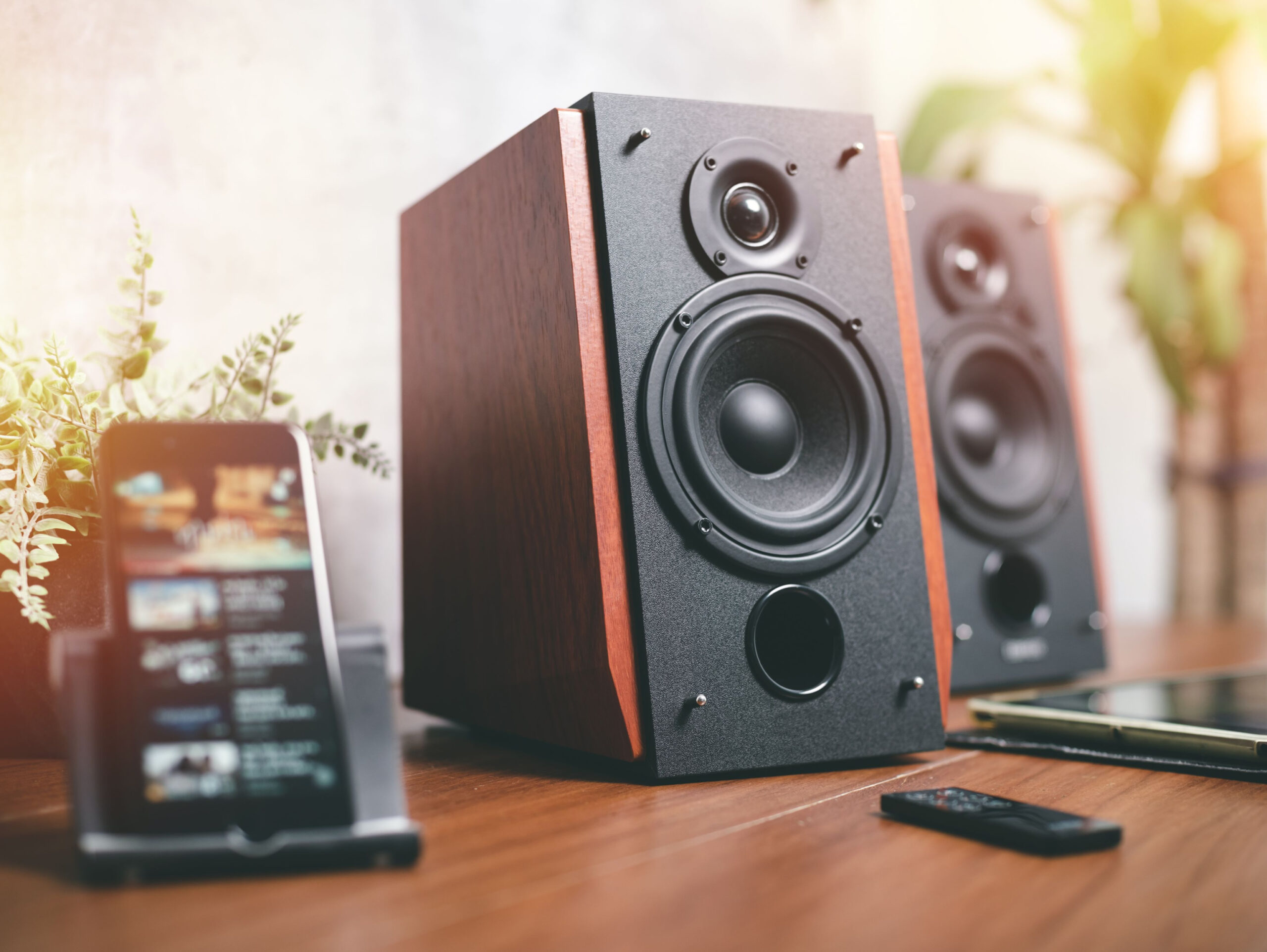Listening with focused attention and a deep appreciation
Audiophiles embark on a quest to reproduce high-fidelity sounds that mimic that original live recording using amplifiers, speakers, cables and other gear to bring out distinct sounds that are otherwise mute to the untrained ear. Although one can dive into this world at varying depths, one thing is for sure: audiophiles don’t just listen to music — they hear every sound that creates it.
To achieve that level of precise listening requires a designated room with equipment meticulously placed for ideal acoustics. All of this helps the listener to envision a three-dimensional soundstage in which to truly experience the music.
THE SOUNDSTAGE AND STEREO IMAGING
The soundstage refers to the physical space where a song was originally recorded, including its acoustical properties. It provides a sense of the music’s relative distance or closeness. A good soundstage will make you feel like the music is being played live. Stereo imaging, also called imagining, is how accurately and clearly the audio setup is able to replicate the location of each instrument in the recording. Good imaging, sometimes described as transparent, will distinctly separate the layers of sound, creating a spatial plane in which to place each sound. When clarity is missing, you’ll get a muddy or bloated sound.
The recording itself, the audio system and the room it’s being played in are all components that can impact how well one can pinpoint the location of each instrument and vocalist during the song. When all things align, a listener has a full visual of the musical arrangement the day the band was in the recording studio.
KEY ELEMENTS OF A HI-FI SETUP
The Source
A source can be a streaming app on a smartphone, a turntable or a CD player.
Amplification
Most sources have integrated amplifiers, but using a Digital-to-Analogue Converter (DAC) to boost the source’s electrical signal will result in much better sound quality.
Speakers
There’s no one size fits all for speakers. Determining which speakers are right for your space will require some research.
Equipment can range from a few hundred dollars to five or six thousand dollars before skyrocketing into the six figures. Oftentimes, the steep price tag has more to do with the name attached and the design than it does with the actual sound quality. In fact, most would argue that a high price tag doesn’t guarantee better sound. Since there are multiple parts acting as a whole, each one is only as good as the others. This is where being an audiophile can get pricey. If you want to upgrade speakers, be ready to upgrade a few other things as well.
TYPES OF AUDIO FILES
Uncompressed files:
Uncompressed files: Very large files that include all of the possible information that audio equipment can detect. Formats include WAV, AIFF and PCM.
Compressed lossless files:
Compressed or lossy files:
Compressed or lossy files:
Compressed files remove some information that is not entirely essential. Popular lossy audio file formats include MP3s and AAC.
There’s no denying technology has advanced over the past few decades. While this means hi-fi equipment has had some upgrades, it also means the world of audiophilia has seen shifts in how hi-res and lossless audio files are accessed. Thanks to the internet, these files that were once nearly impossible to find can now be tracked down in a few clicks. However, substantial amounts of data storage and the right setup are still essential to make file types such as WAV and FLAC worth it.
TAKE A LISTEN
When testing out new equipment, listen to one of your most played songs. Using a song that you know by heart will make it easier to hear the differences in quality and pick up on new sounds.
While this is far from a comprehensive list, these are a few of the albums that most audiophiles will have in their collection.
Pink Floyd
Wish You Were Here (1975)
The Beach Boys
Pet Sounds (1966)
Miles Davis
Kind of Blue (1959)
Arcade Fire
Funeral (2004)
James Taylor
Sweet Baby James (1970)
Neil Young
After the Gold Rush (1970)
Daft Punk
Random Access Memories (2013)
Radiohead
Hail to the Thief (2003)
AUDIOPHILIA FOR THE EVERYDAY LISTENER
Some say that any music listener who takes even the slightest steps to improve their listening experience is an audiophile, even if it’s at an entry level. Today’s digital world allows people to dip their toes into the sound waves without large investments at stake if they change their minds.
Streaming services have broken down barriers that once prevented most from enjoying their favorite songs in the way the artist intended. Tidal, a high-fidelity streaming service, was once the only one in the game. However, Apple and Amazon have both stepped onto the playing field, offering hi-fi music at no extra cost to users. This is a huge advancement in the music world as it gives anyone with either streaming subscription a jumping-off point into the fascinating world of audiophilia.

